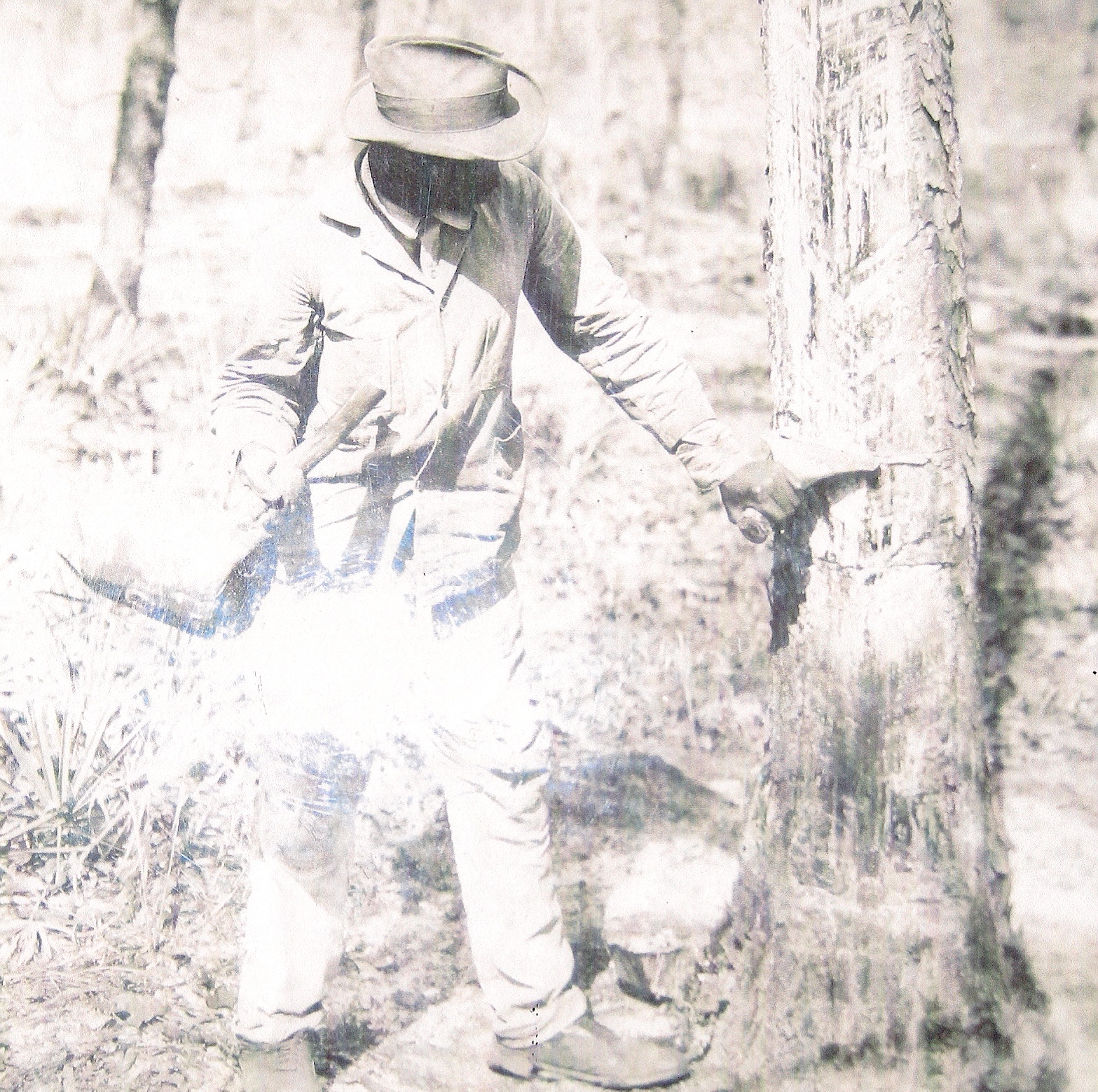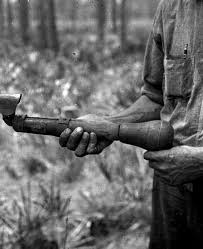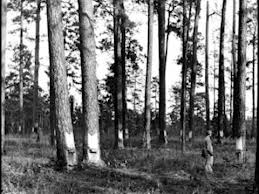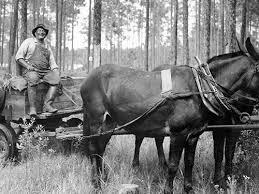THE 4L TURPENTINE CAMP ON PEASON RIDGE
BY RICKEY ROBERTSON
During the heyday of the large scale logging operations in our area, companies such as Peavy Wilson Lumber Company and 4L Company used the mighty virgin pine forests for many other resources. On present day Peason Ridge, 4L Company and Peavy Wilson Company had nearly 10,000 acre's each, and in other locations many more thousands of acres. These and other companies needed large numbers of crossties to make spur tracks and trams in which the harvested timber could be brought to the mills. Crews would go out and harvest the hardwoods needed to make ties, bring them into the mill town, and crews of men would hew these hardwood logs with broadaxes and foot adzes into ties. The slabs and chips, especially at the Peason Mill , were used with pine park and other wood scraps to fire the boilers.
But there was one product that was needed by the whole nation that came from the large stands of pine timber. That product was turpentine, which was also known as naval stores. Turpentine was used in everything from medicine, paint, sealer, and other products. Yes turpentine was used on all the wooden sailing ships of the day as a sealant. To obtain the rich pine resin in which turpentine was derived, turpentine camps were set up. 4L Company had one of the largest turpentine and still sites in west central Louisiana. This site was near Dowden Creek and the home sites of Coleman and Jim Owers on Peason Ridge. At these turpentine camps the workers lived in what was known as a skid camp. Small one room huts built on skids where the workers and their families lived. As the forests were harvested these skid camps could easily be relocated to other locations by hitching up a team of horses or mules and skidding these little huts to a new camp site. And yes, the workers raised a family while living in these skid shacks. The children grew up in and among all the activities of the turpentine still camp. A large number of workers were needed at the turpentine still site, where the pine resin was removed from the clay or metal turpentine camps and was then cooked down in large boilers. One hazard of working around the still site was that the hot pine resin would pop out onto the workers and would severely burn and scar them. After the resin was cooked, the product was then placed in large wooden barrels where they would then be shipped nationwide for more processing into the many products made from the resin.
At the 4L turpentine mill site, there were both black and white workers known as "turpentiners". Many worked in the woods scraping the bark from the pine trees with a scrapper into a deep V. The cup was then attached and the resin would slowly flow into the cups. After the cups had been filled they were gathered and hauled to the still site for processing. We have knowledge that somewhere near the turpentine still site that three black workers were buried. Their graves may only be marked by stones and we are not sure if they died of sickness or work injury. Hopefully we will find these graves and can properly mark them.
After the vast pine forests were cut down there was no more pine resin to gather so the turpentine camps passed into history. But in the 1950's and 1960's the vast areas of cutover pine stumps again produced turpentine. At this time the "stumpers" moved in with caterpillar dozers and even dynamite and they began to root out these pine resin rich stumps. Large trucks carried hundreds of loads of pine stumps to the DeRidder area where they were processed for their turpentine. I think of this era every time I see a "stump hole" out in the woods.
As you read this story think of the hard work accomplished by these "turpentiners and stumpers" as they gathered this much needed pine resin that even today is used in so many of our daily products. And as you walk about the woods and see the broken pieces of an old turpentine cup, remember the days of old when the gathering of pine resin was a vital industry in our area. And yes, if you had a family member who worked in the turpentine industry, it is an honor to be known as a turpentiner !

Turpentiner preparing the tree to obtain the much used resin that would be made into turpentine. (Robertson Collection)
.jpg)
The 4L turpentine still site was a very large operation that was located on present day Peason Ridge Military Reservation. (Robertson Collection)

Turpentine hack used to tap and scrape the trees so that the resin could be obtained. (Robertson Collection)

Pine trees in forest being tapped to obtain the resin to be processed into turpentine. (Robertson Collection)

Turpentine wagon hauling the resin from the woods to the still site for processing. (Robertson Collection)